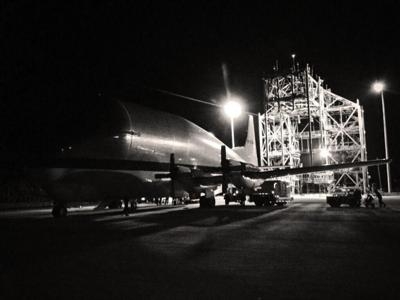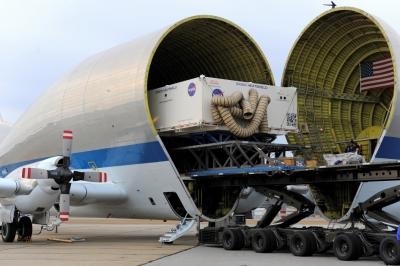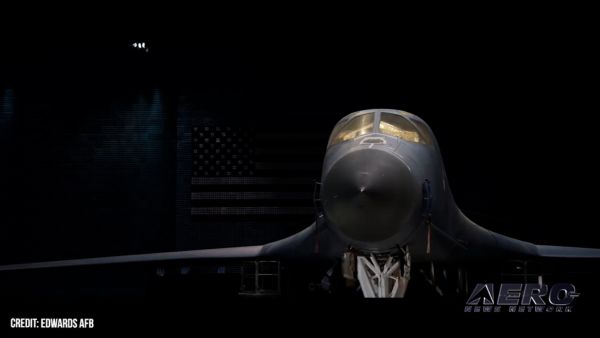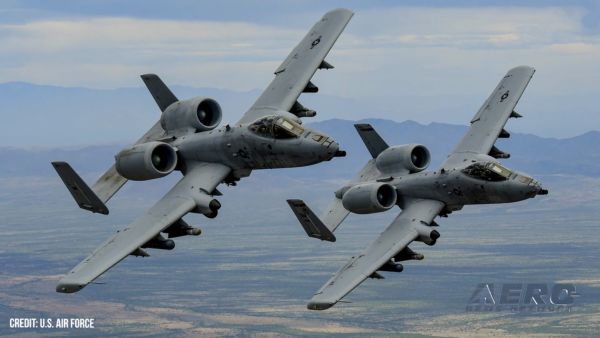Fri, Dec 06, 2013
Largest Such Device Ever Built
NASA's Orion spacecraft is just about ready to turn up the heat. The spacecraft's heat shield arrived at the agency's Kennedy Space Center in Florida Wednesday night aboard the agency's Super Guppy aircraft. The heat shield, the largest of its kind ever built, is to be unloaded Thursday and is scheduled for installation on the Orion crew module in March, in preparation for Orion's first flight test in September 2014.

"The heat shield completion and delivery to Kennedy, where Orion is being prepared, is a major step toward Exploration Flight Test-1 next year," said Dan Dumbacher, NASA's deputy associate administrator for exploration systems development in Washington. "Sending Orion into space for the first time is going to give us crucial data to improve our design decisions and develop Orion to send humans on future missions to an asteroid and Mars."
The heat shield began its journey in January 2012 in Colorado, at Orion prime contractor Lockheed Martin's Waterton Facility near Denver. That was the manufacturing site for a titanium skeleton and carbon fiber skin that give the heat shield its shape and provide structural support during landing. They were shipped in March to Textron Defense Systems near Boston, where they were used in construction of the heat shield itself.
Textron installed a fiberglass-phenolic honeycomb structure on the skin, filled each of the honeycomb's 320,000 cells with the ablative material Avcoat, then X-rayed and sanded each cell to match Orion's design specifications. The Avcoat-treated shell will shield Orion from the extreme heat it will experience as it returns to Earth. The ablative material will wear away as it heats up during Orion's re-entry into the atmosphere, preventing heat from being transferred to the rest of the capsule. "Many people across the country have poured a tremendous amount of hard work into building this heat shield," said Orion Program Manager Mark Geyer. "Their efforts are a critical part of helping us understand what it takes to bring a human-rated spacecraft back safely from deep space."

Before and during its manufacture, the heat shield material was subjected to arc-jet testing NASA's Ames Research Center in California and NASA's Johnson Space Center in Houston. Arc jets heat and expand gasses to very high temperatures and supersonic and hypersonic speeds, thus simulating the heating conditions that a returning spacecraft will experience.
The heat shield delivered to Kennedy will be used during Exploration Flight Test-1, a two-orbit flight that will take an uncrewed Orion capsule to an altitude of 3,600 miles. The returning capsule is expected to encounter temperatures of almost 4,000 degrees Fahrenheit as it travels through Earth's atmosphere at up to 20,000 mph, faster than any spacecraft in the last 40 years.
Data gathered during the flight will influence decisions about design improvements on the heat shield and other Orion systems, authenticate existing computer models, and innovative new approaches to space systems and development. It also will reduce overall mission risks and costs for future Orion missions, which include exploring an asteroid and Mars.
(Images provided by NASA)
More News
Instrument Approach Procedure (IAP) Charts Portray the aeronautical data which is required to execute an instrument approach to an airport. These charts depict the procedures, incl>[...]
“Our industry is approaching a 30-year innovation cycle, and we have less than 25 years to decarbonize aviation. We need to develop new methods to get net zero aerospace tech>[...]
Also: Girls in Aviation Day, B-29 Doc Heads 4 Chino, C-17 Tail Cone Detaches, Bulgaria Airshow Accident One of two private aircraft that launched from Apatity Airport near Murmansk>[...]
From 2021 (YouTube Version): We Were Blown Away At How Well The Nosewheel Was Adapted To The X Cub Airframe It should not be a secret to any one of you, that with thousands of hour>[...]
Also: Volato Nixed by Honda, New B-21 Bases, A-10 Unit Inactivated, Gogo/Airshare Boom Supersonic announced its demonstrator aircraft XB-1 successfully completed its third test fli>[...]
 ANN's Daily Aero-Term (09.17.24): Instrument Approach Procedure (IAP) Charts
ANN's Daily Aero-Term (09.17.24): Instrument Approach Procedure (IAP) Charts Aero-News: Quote of the Day (09.17.24)
Aero-News: Quote of the Day (09.17.24) Airborne 09.16.24: Bristell Shooting, EAA v FAA, Boeing Strike!
Airborne 09.16.24: Bristell Shooting, EAA v FAA, Boeing Strike! Classic Aero-TV: CubCrafters NX Cub-A Stunning Effort To Build The Perfect Cub'
Classic Aero-TV: CubCrafters NX Cub-A Stunning Effort To Build The Perfect Cub' Airborne 09.18.24: Boom XB-1 3rd Test, DJI Ban, SubSonex To EAA Museum
Airborne 09.18.24: Boom XB-1 3rd Test, DJI Ban, SubSonex To EAA Museum




